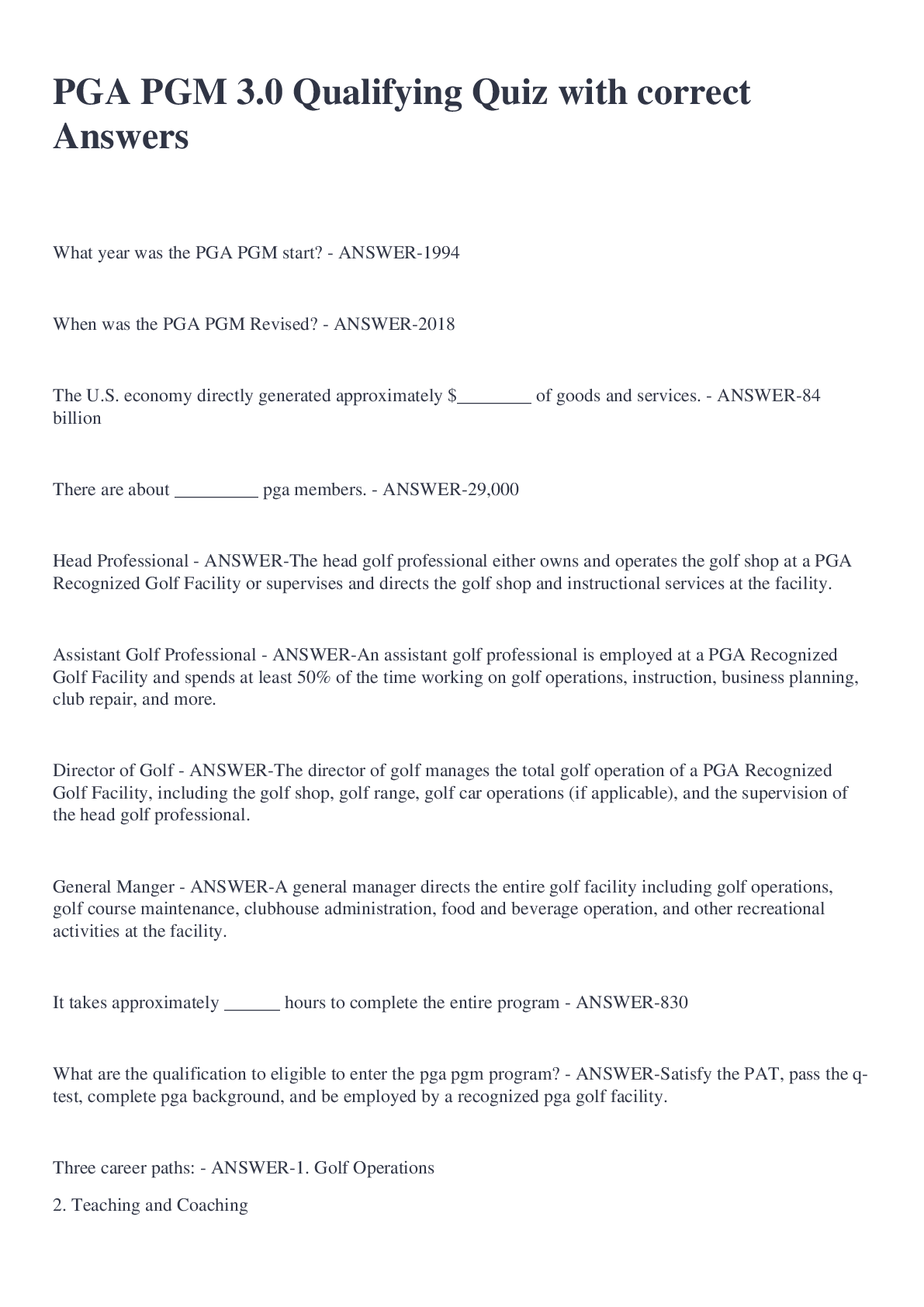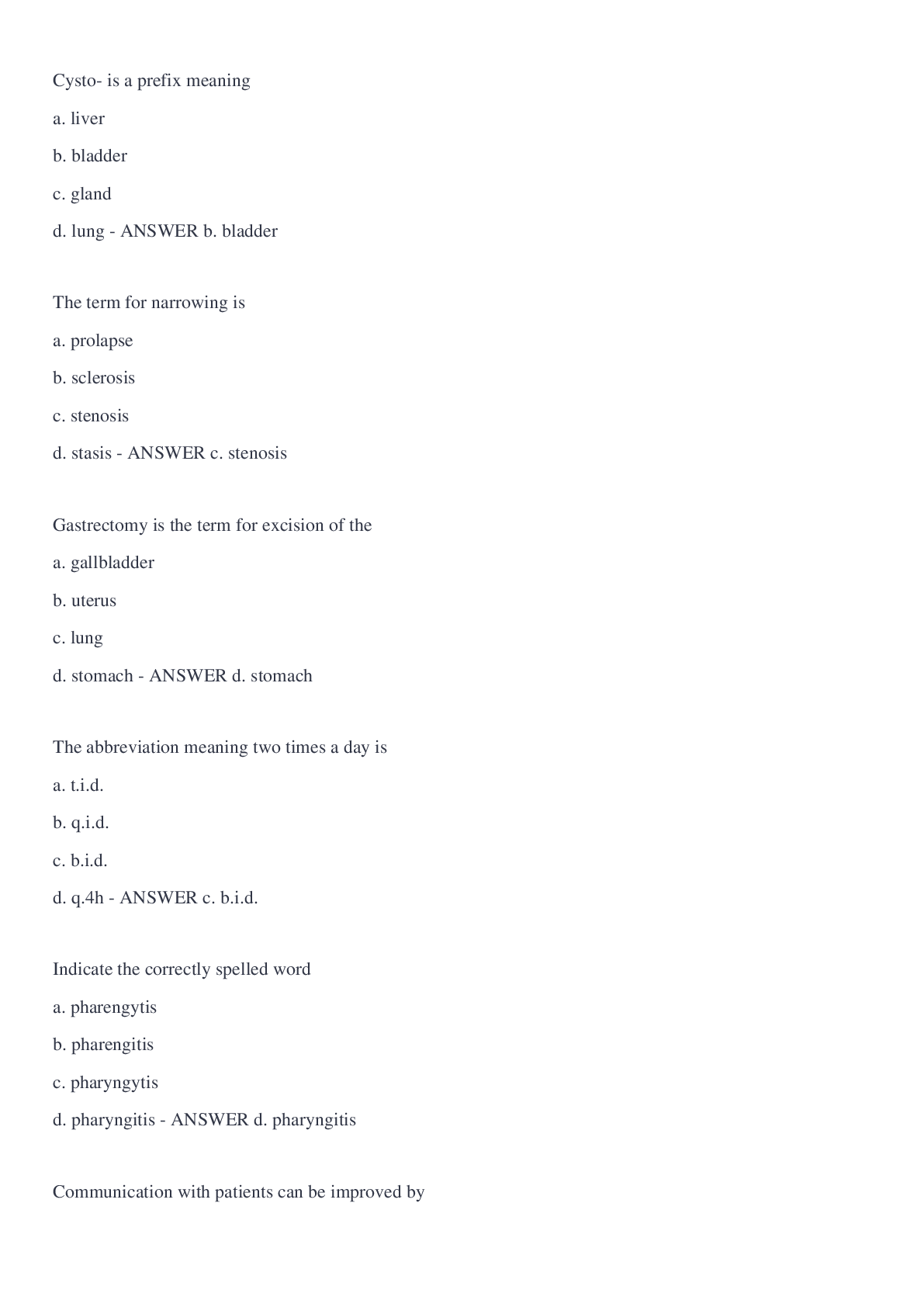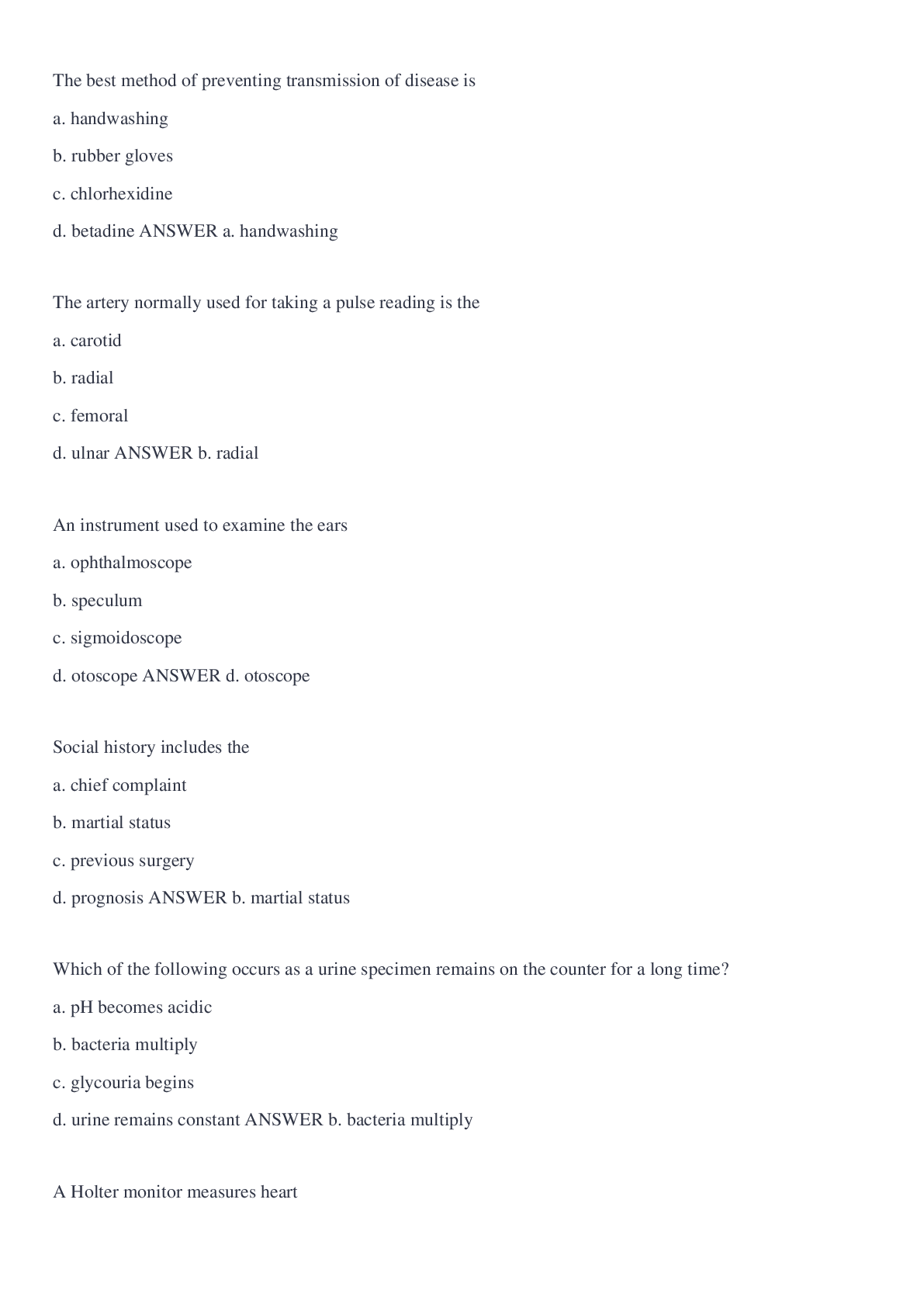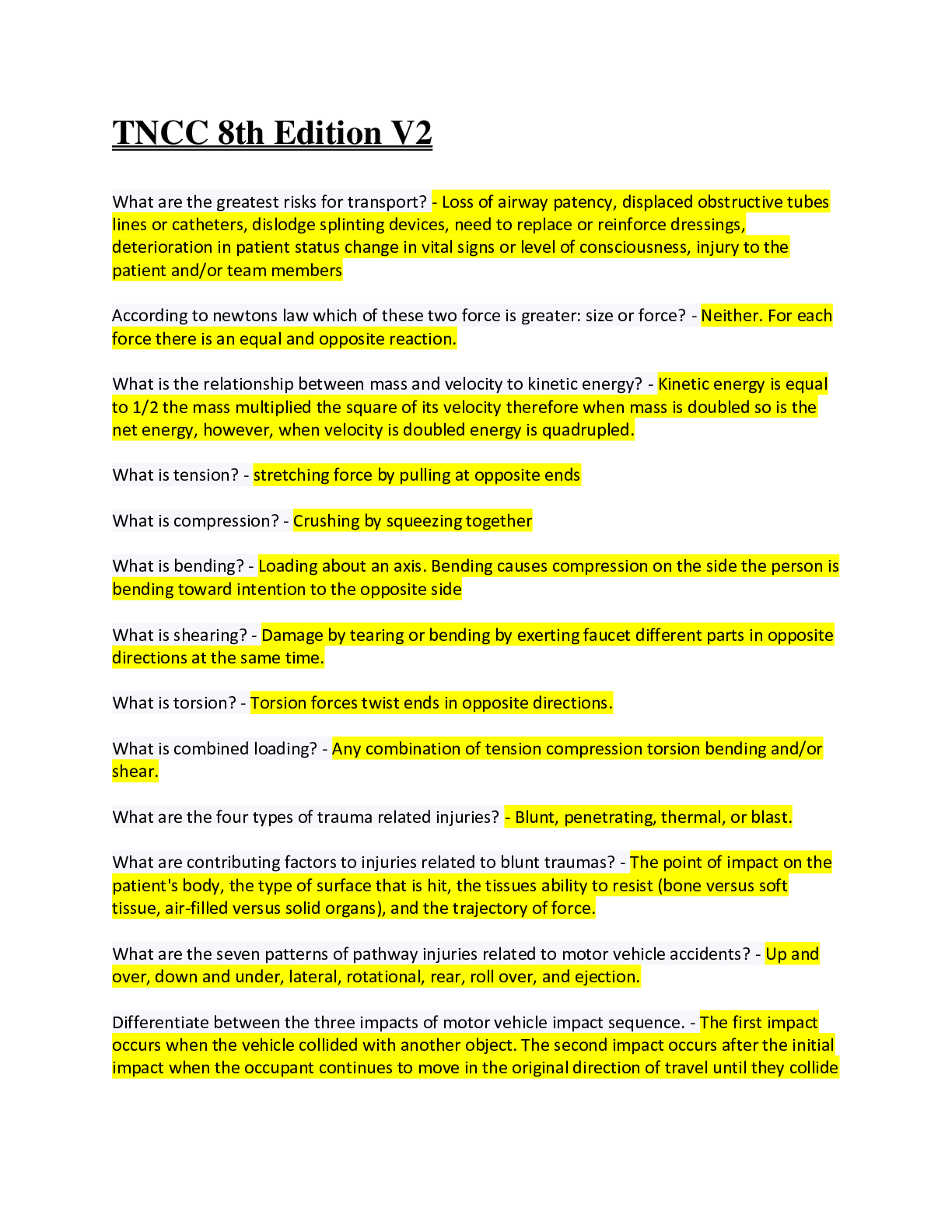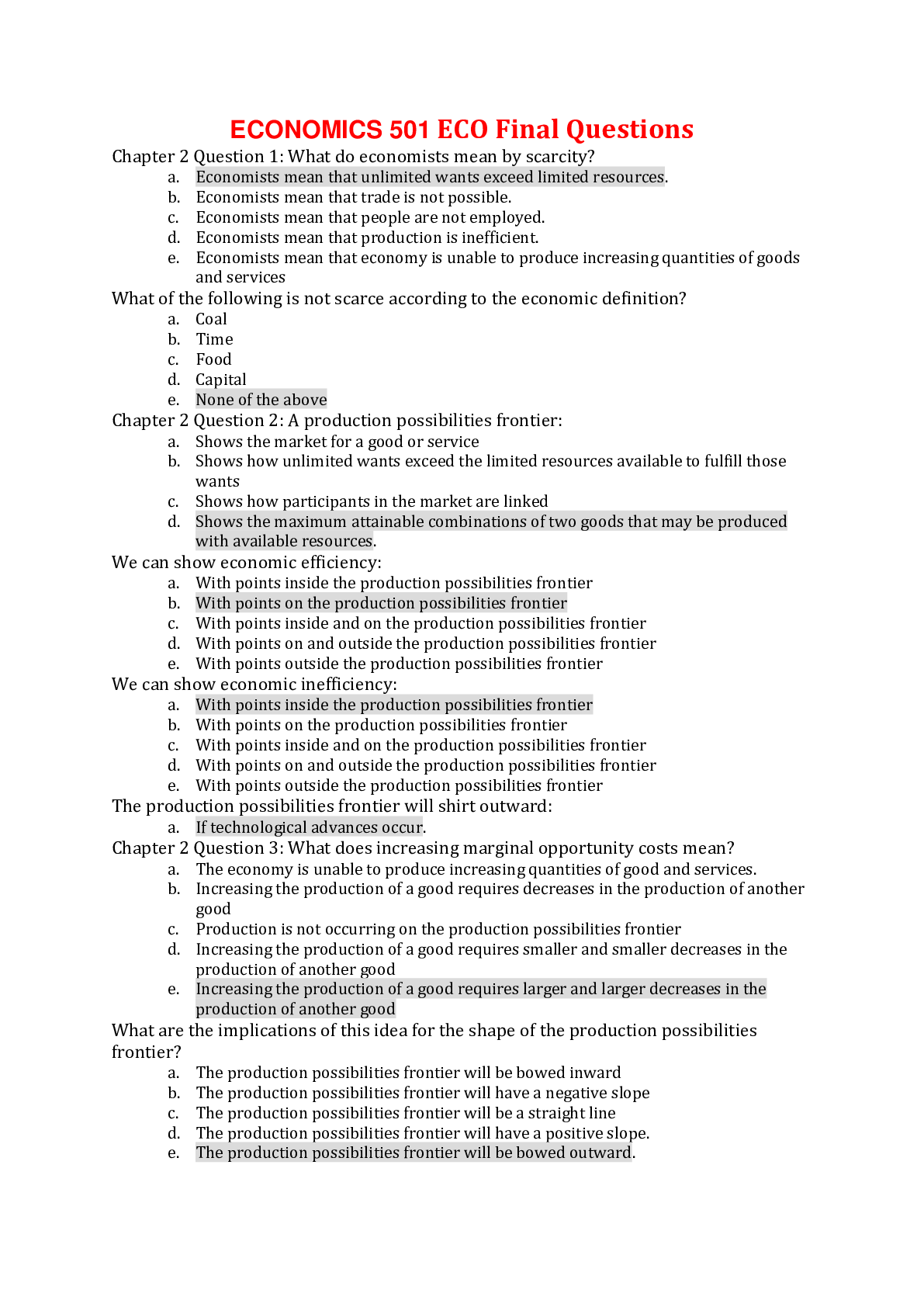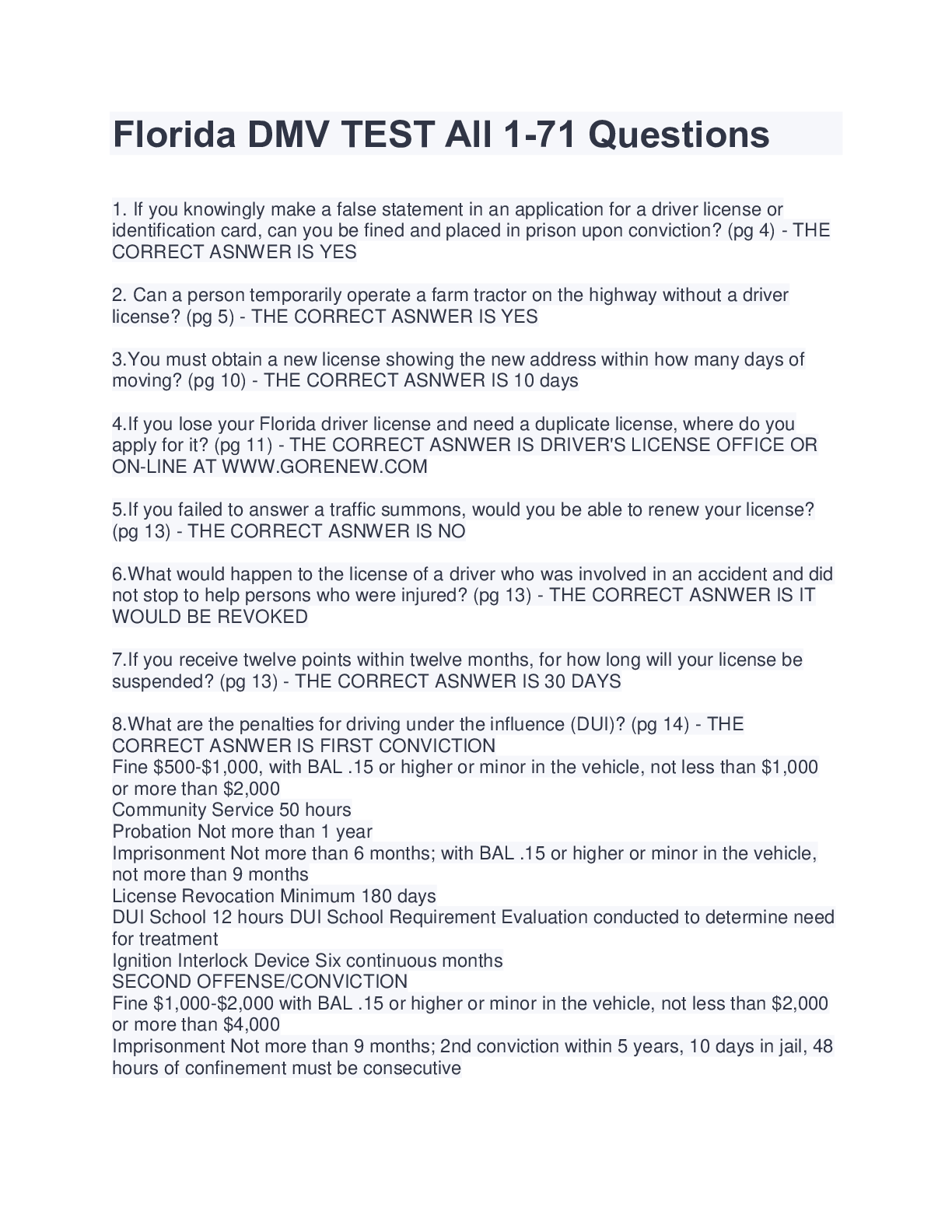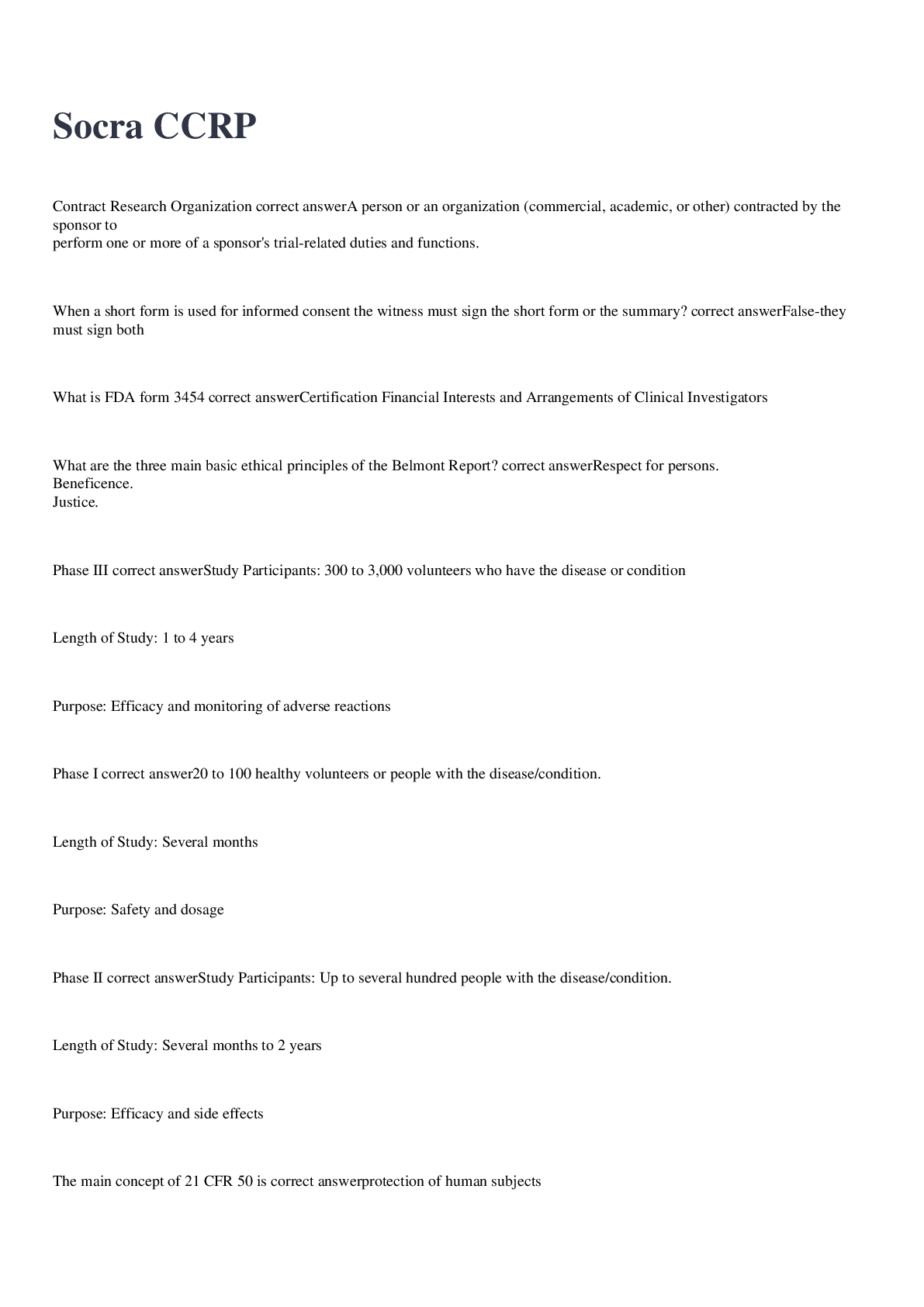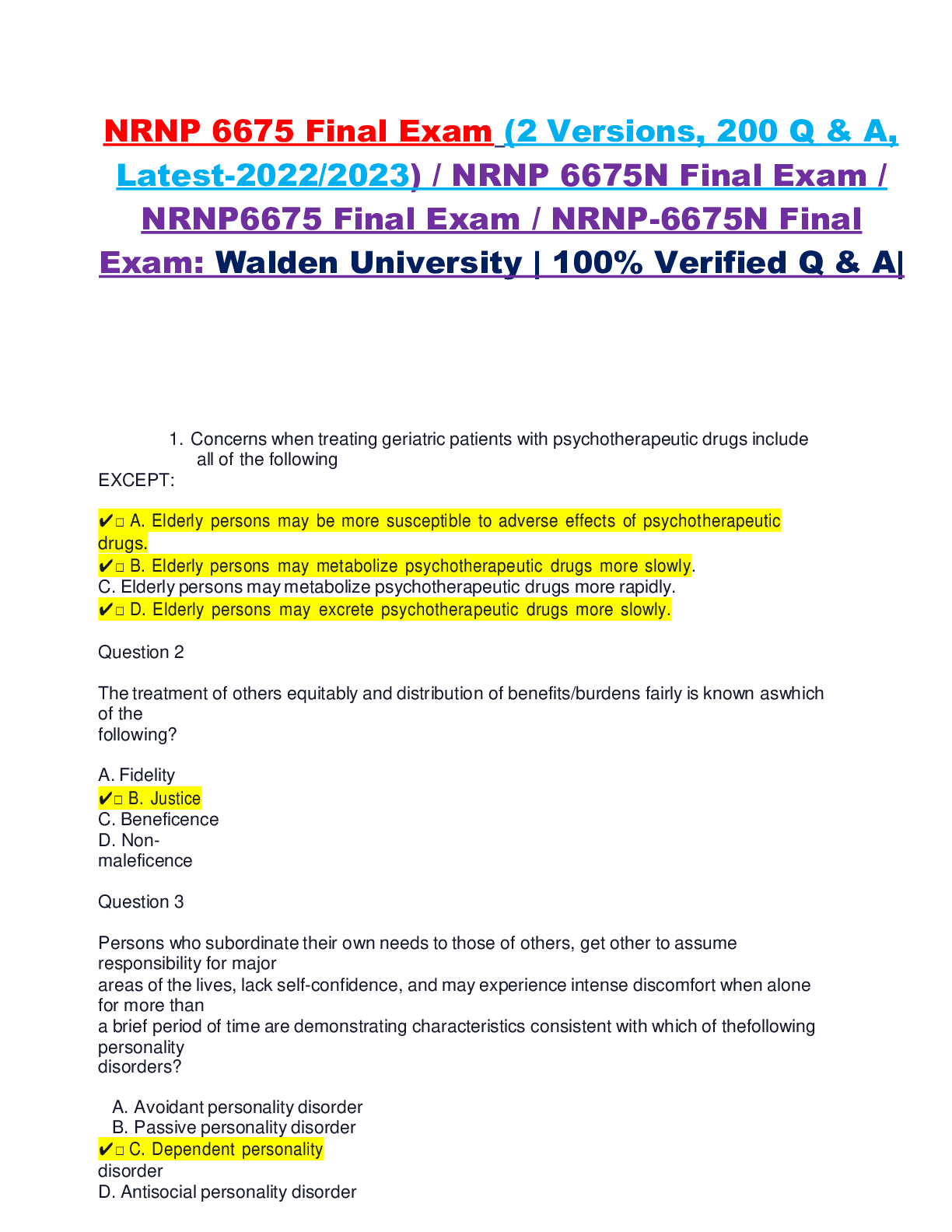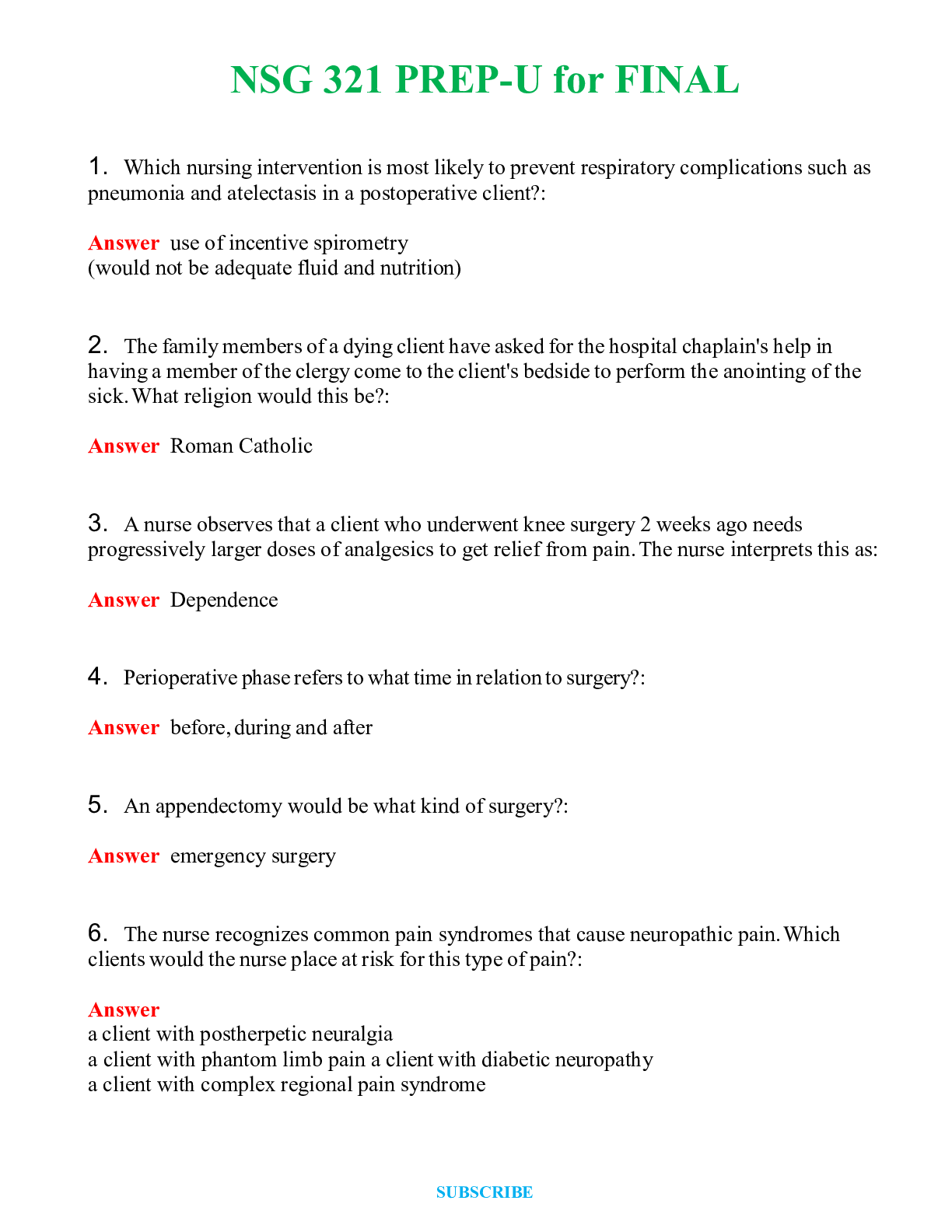LETRS Module 2 Test|All Solved
Document Content and Description Below
phoneme - ANSWER the smallest segment of speech in a language system Phonemic Awareness - ANSWER understanding that a word is made up of sounds and the ability to manipulate sounds in spoken words ... Phonology - ANSWER the rule system within a language by which phonemes can be sequenced, combined and pronounced to make words pragmatics - ANSWER the system of rules and conventions for using language and related gestures in a social context syntax - ANSWER the system of rules governing permissible word order in sentences orthography - ANSWER A writing system for representing language hour glass concept - ANSWER sentence word syllables onset rime phonemes sematics - ANSWER the meanings of words, phrases and sentence Phonological working memory - ANSWER refers to temporary mental storage of speech stimuli Alphabetic principle - ANSWER the concept of how the english language uses graphemes to represent phonemes Phonics - ANSWER · the system of correspondence between phonemes and graphemes. Also the approach to reading and spelling instruction that directly teaching students to use the correspondence to identify unknown words Sequence of phonological skill development - ANSWER -Word awareness- tracking the words in sentence - Responsiveness during word play - Syllable awareness -Onset rime manipulation -Phoneme awareness Articulation - ANSWER place where the sound comes from front, middle or back of the mouth voiced - ANSWER · sound when the voice box is on unvoiced - ANSWER when the voice box is off example of voiced - ANSWER /v/ example of unvoiced - ANSWER /th/ stop - ANSWER · pronounced with one short push continuant - ANSWER · pronounced until run out of breath example of stop - ANSWER /k/ or /p/ example of continuant - ANSWER /s/ or /m/ nasal sounds - ANSWER driven with air through the nose example of nasal sounds - ANSWER /m/ /n/ or /ng/ fricatives - ANSWER a constant sound forced by air through the narrow passage with vocal track example of fricatives - ANSWER /f/ /v/ /s/ /z/ /sh/ /zh/ /th/ affricatives - ANSWER a feature of both a fricative and a stop example of affricatives - ANSWER /ch/ /j/ vowels - ANSWER one set of 15 vowels in english phonemes consonants - ANSWER · is formed by obstructing the flow of air with teeth, lips or tongue. Also called a closed sound glides - ANSWER sound that glides immediately to a vowel example of glides - ANSWER /h/ /w/ /y/ liquids - ANSWER sounds that have vowel like qualities and no easy definitive point of articulation example of liquids - ANSWER /l/ /r/ Phonological awareness activities in order easiest to hardest - ANSWER 1. Sentence segmentation 2. Rhyme recognition 3. Syllable counting or identification 4. Onset rime blending and segmenting 5. Blending and segmenting individual phonemes 6. Phoneme deletion and manipulation dialect - ANSWER · A version of a language spoken by a group of people who are separated socially or geographically from other groups teaching phonological skills - ANSWER 1. Follow the order of phonological skill development and recognize the relative difficultly of each task 2. Focus attention on speech sounds before fousing on the letter 3. Encourage mouth awareness 4. Include all english phonemes in the instruction 5. Think multisensory 6. Give 5-10 minute activities 7. Show students what you want them to do 8. Give immediate feedback 9. Use letters to represent sounds as soon as possible phonological awareness activities for preschool and kindergarten - ANSWER 1. Read aloud 2. Rhyme judgement 3. Rhyme matching 4. Alliteration 5. Syllable blending 6. Syllable deletion 7. Syllable counting 8. Initial sound matching 9. Onset rime division 10. Rhyme production phoneme isolation - ANSWER children recognize individual sounds in a word phoneme identity - ANSWER children recognize the same sounds in different words phoneme categorization - ANSWER · children recognize the word in a set of three or four words that has the 'odd' sound phoneme blending - ANSWER children listen to a sequence of separately spoken phonemes and then combine the phonemes to form a word. They write and read the word. phoneme segmentation - ANSWER children break a word into its separate sounds saying each sound as they tap out or count it. phoneme deletion - ANSWER · children recognize the word that remains when a phoneme is removed from another word phoneme addition - ANSWER children make a new word by adding a phoneme to an existing word phoneme substitution - ANSWER children substitute one phoneme for another to make a new word response to intervention model - ANSWER -Screening all students -Intensifying classroom reading instruction -Using flexible grouping -Giving concentrated direct instruction to students in the [Show More]
Last updated: 2 weeks ago
Preview 1 out of 5 pages

Reviews( 0 )
Document information
Connected school, study & course
About the document
Uploaded On
Nov 19, 2022
Number of pages
5
Written in
Additional information
This document has been written for:
Uploaded
Nov 19, 2022
Downloads
0
Views
37



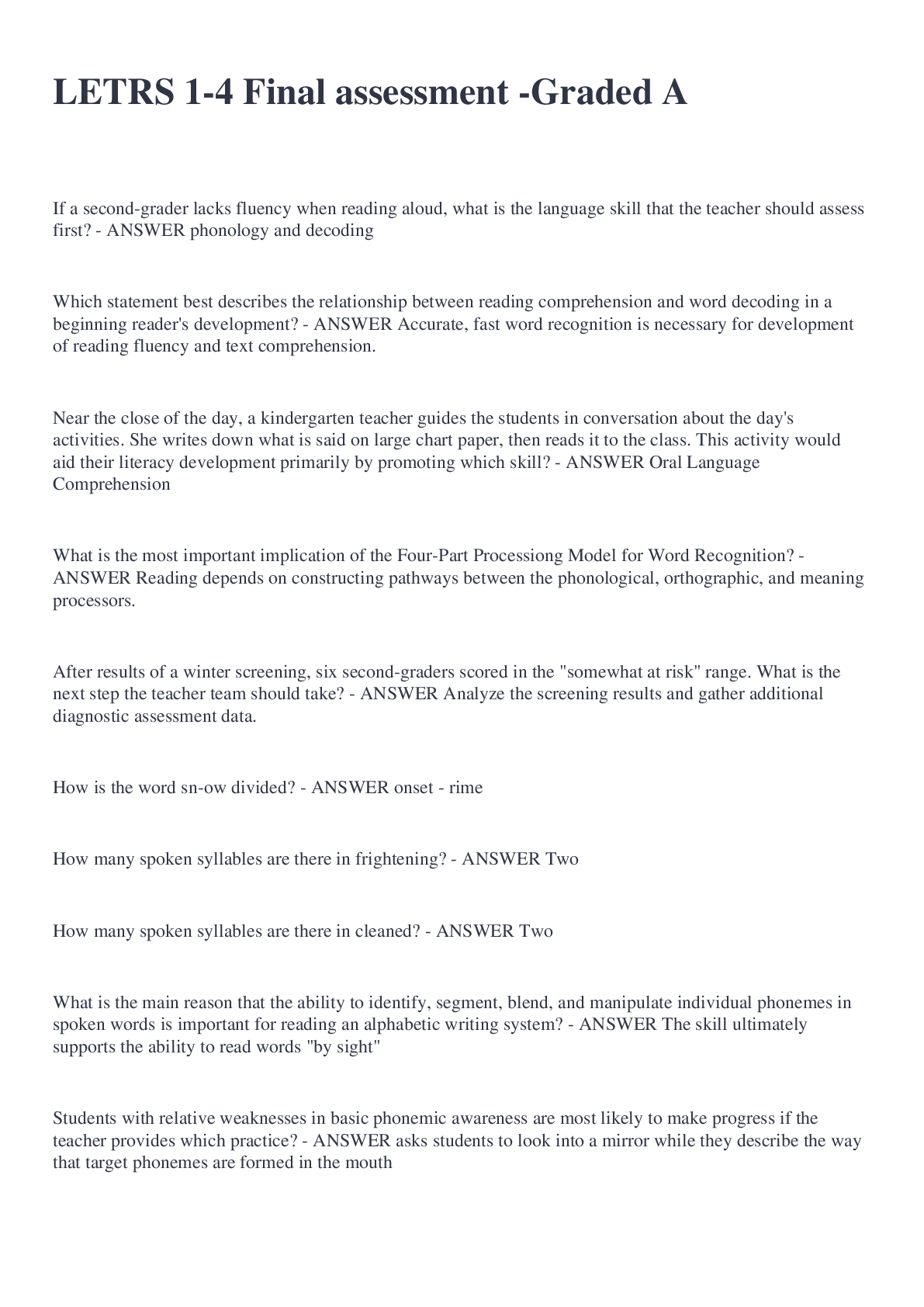

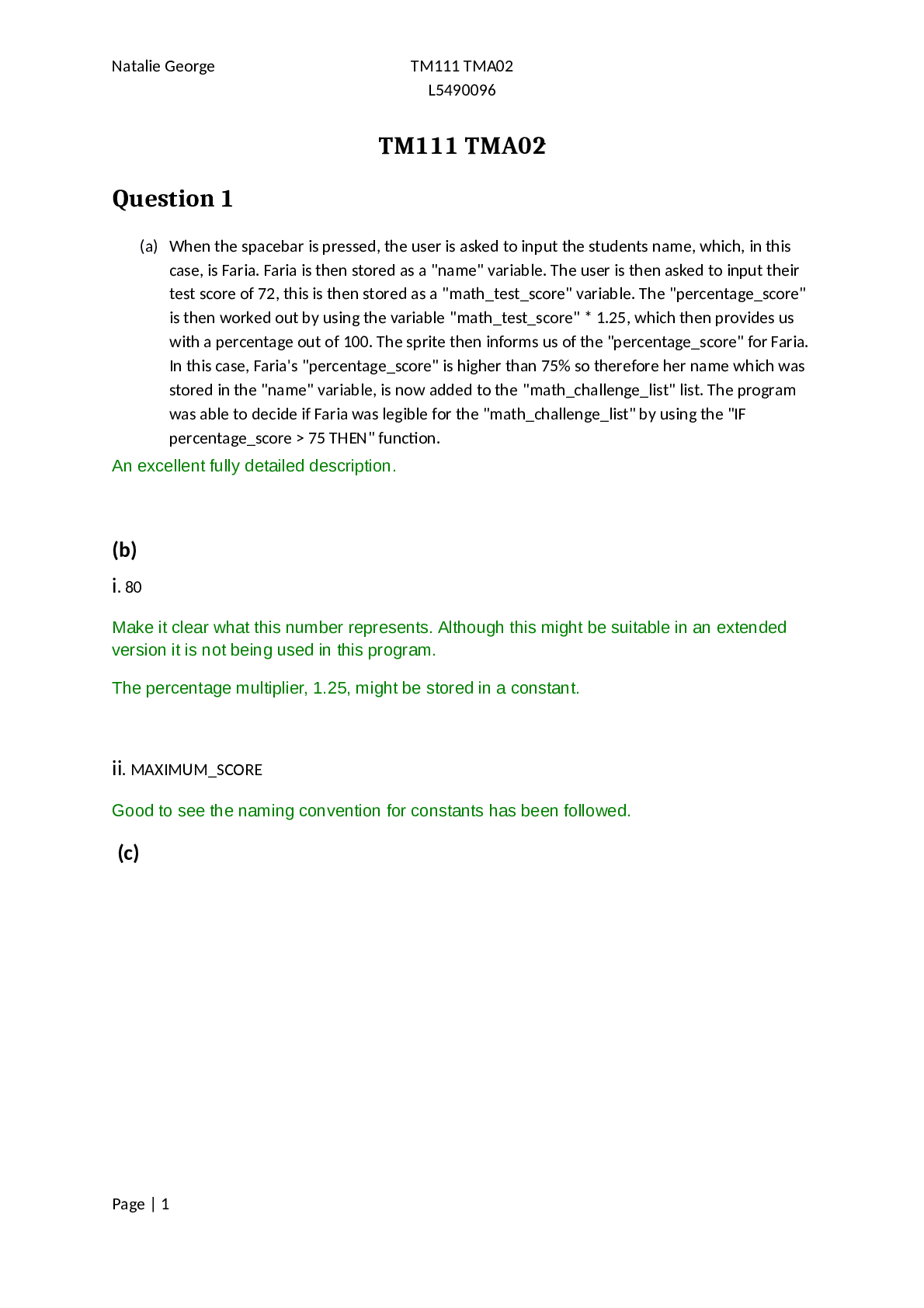


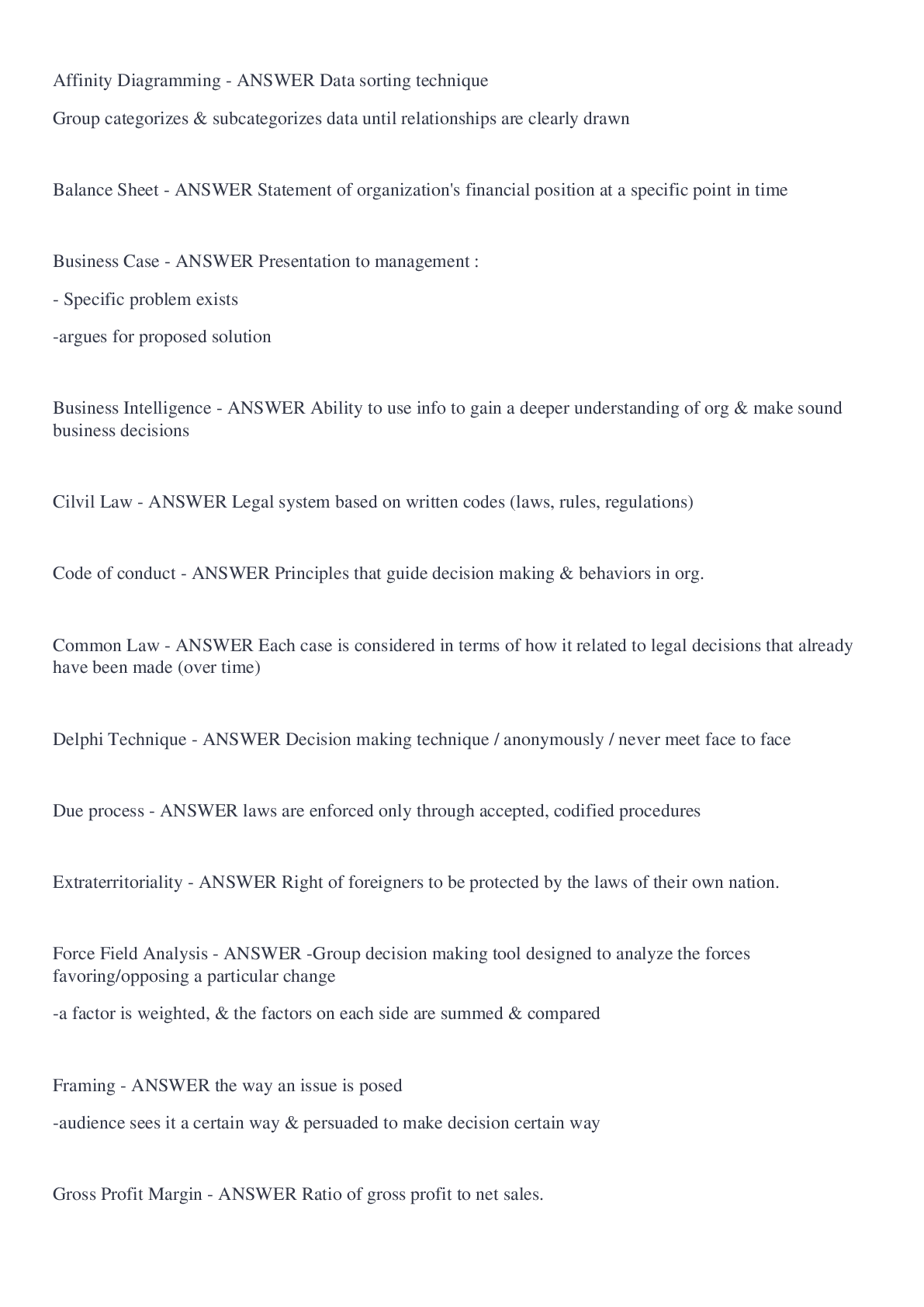

.png)
